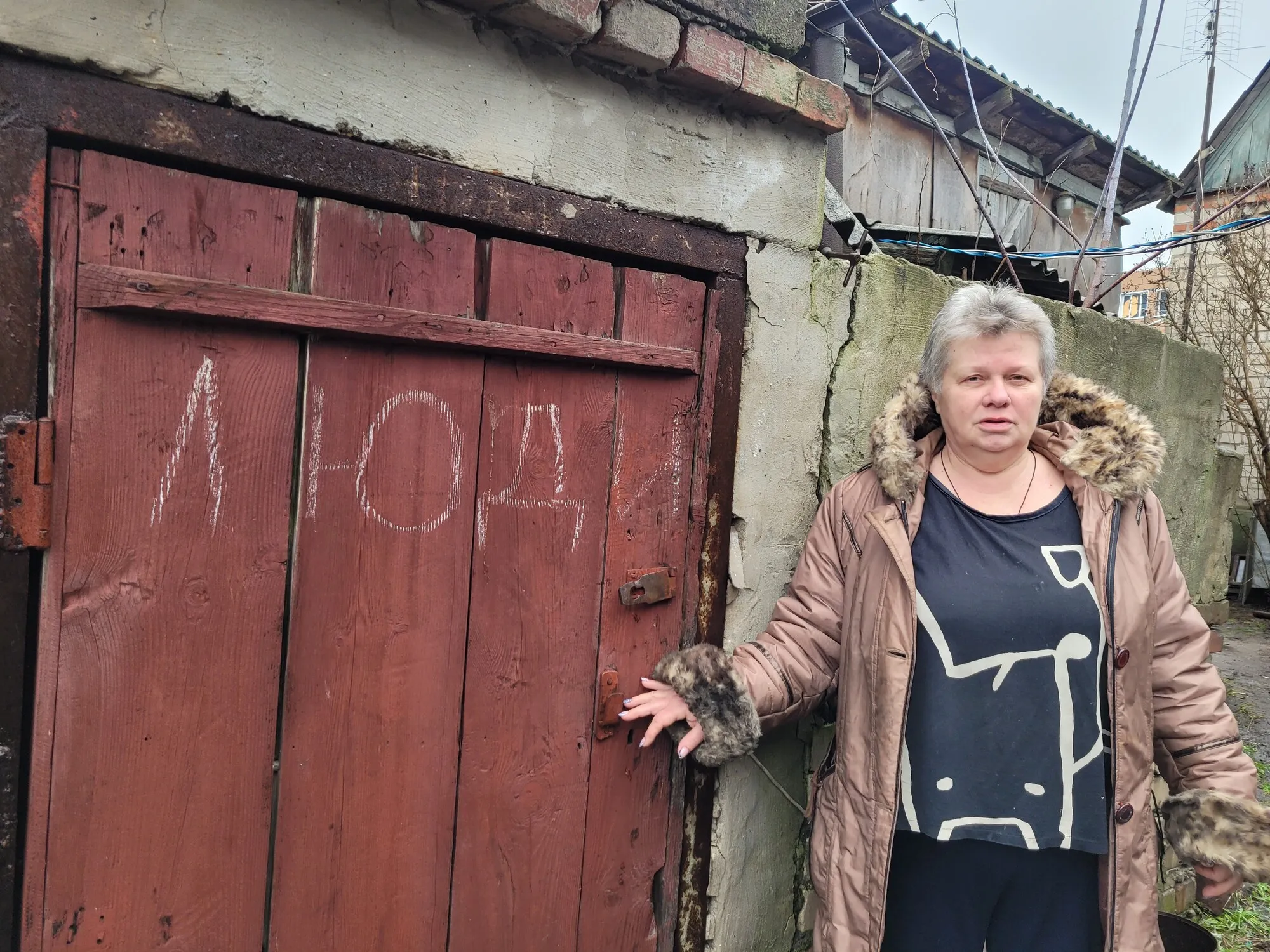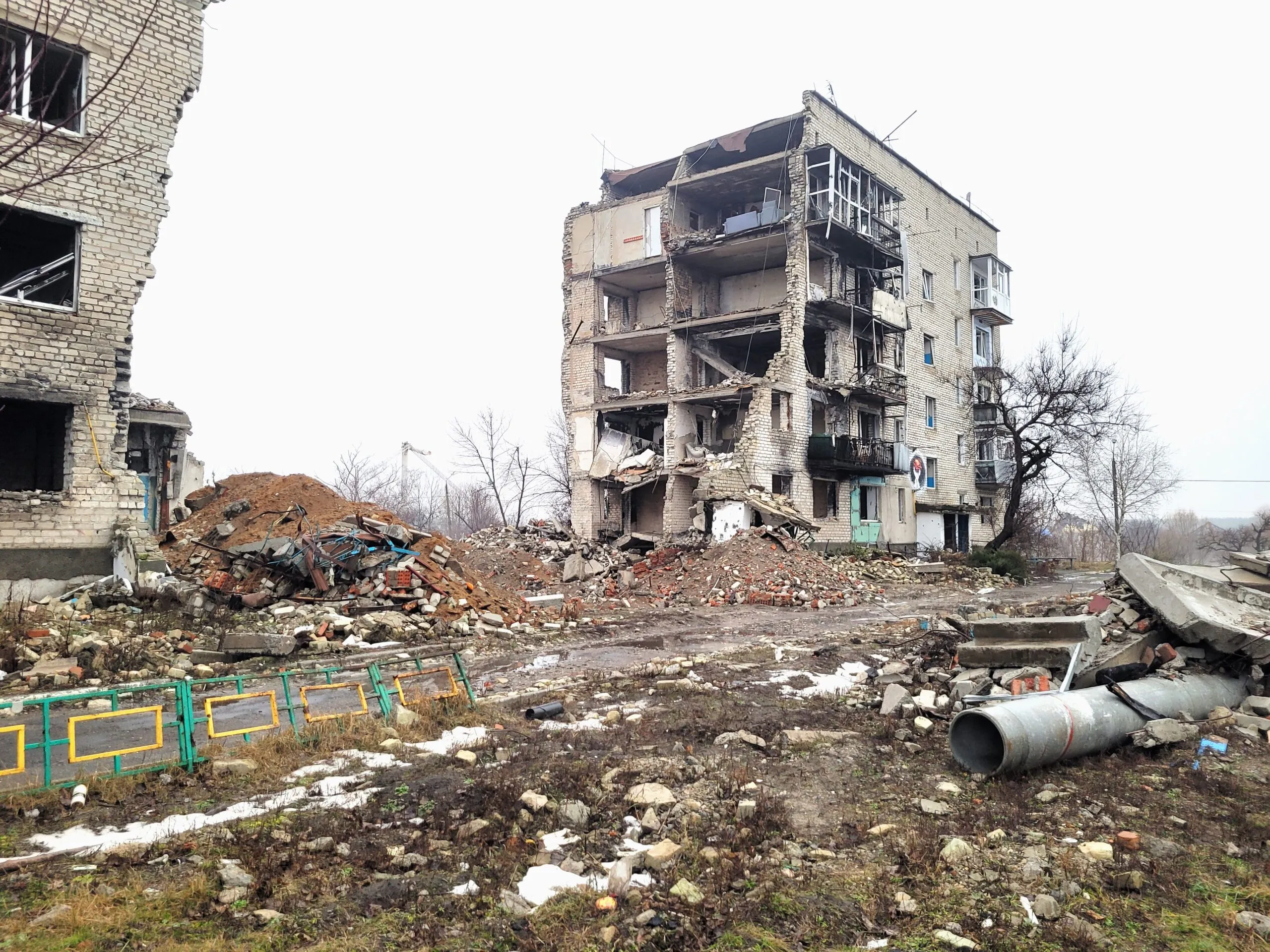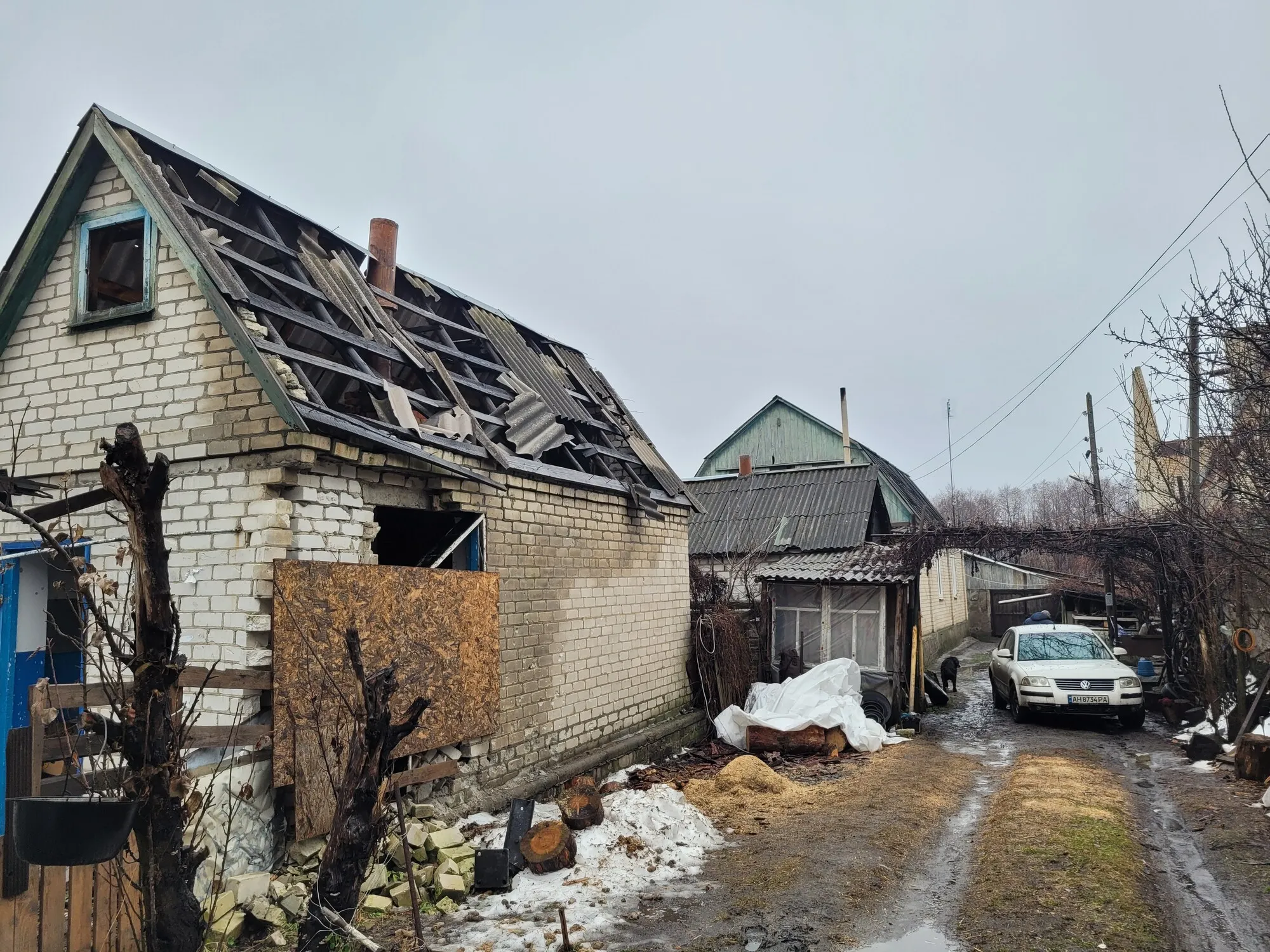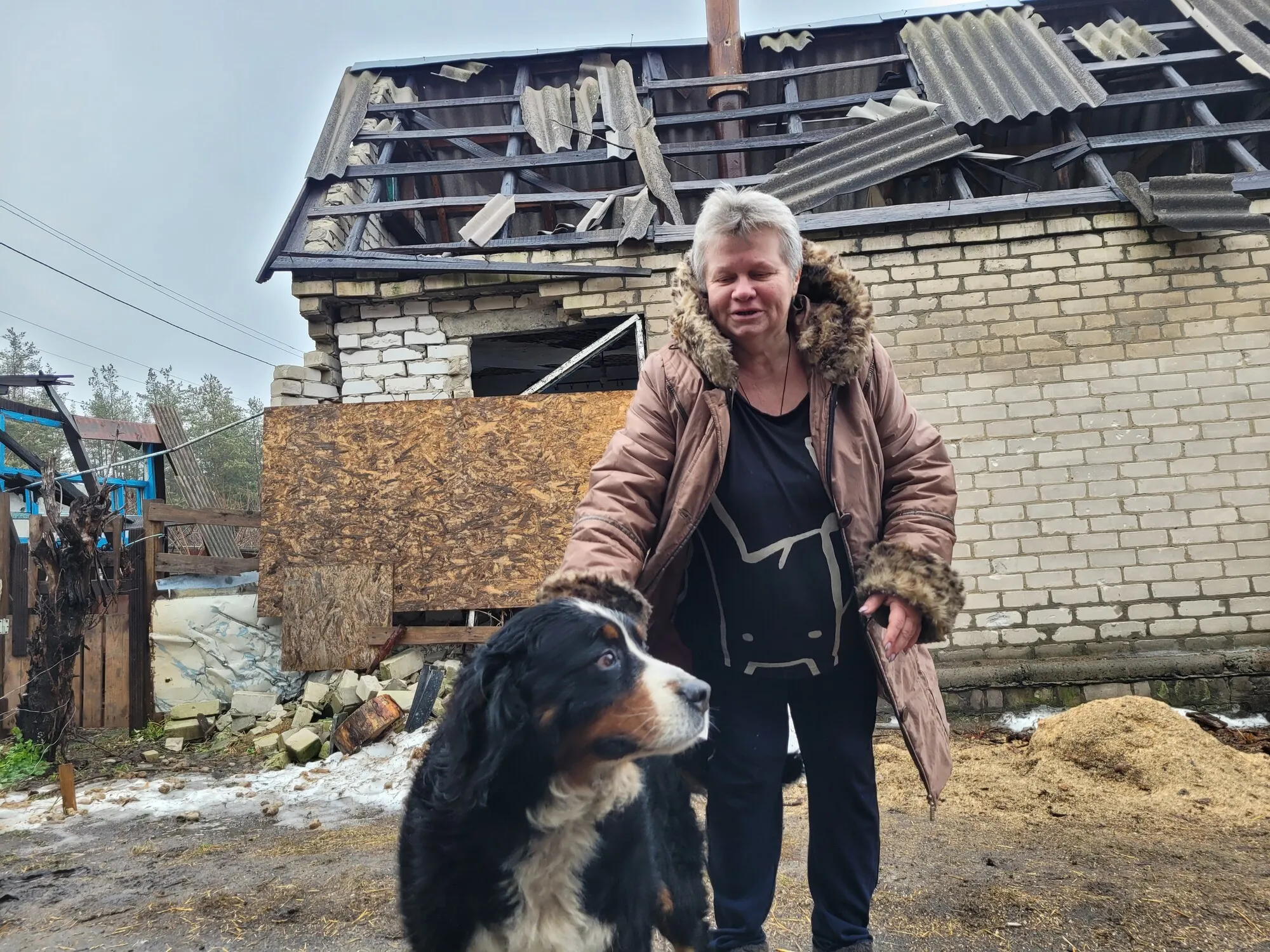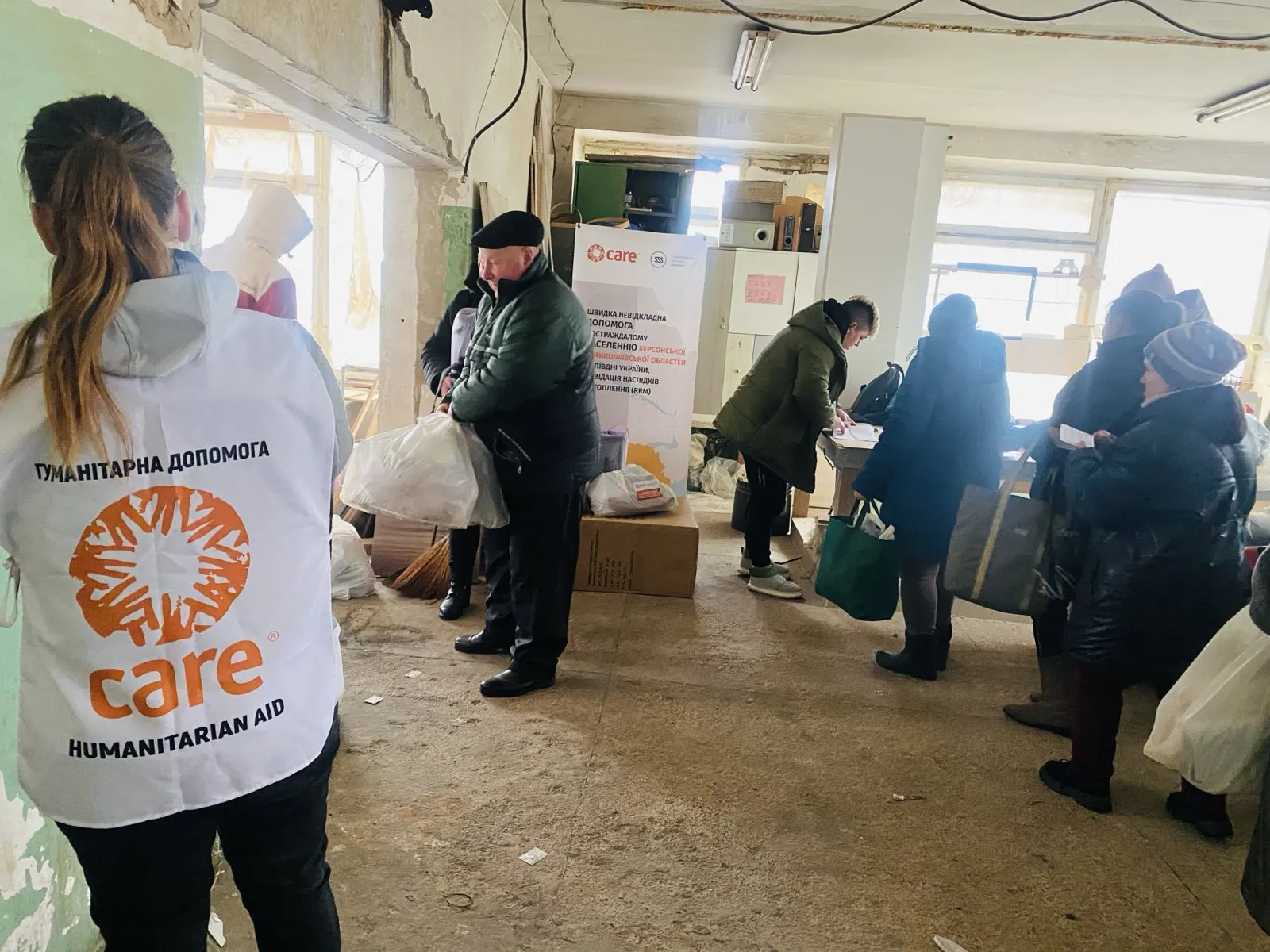“A wooden plank wrapped in a thin plastic sheet served as our bed,” Olga says. “The floor there remained slick with moisture, and the ceiling dripped constantly.”
Yet, Olga and her husband feel immensely grateful to be alive. They hail from Sviatohirsk.
“That is where we lived for 100 days along with our four pets. We wrote ‘people’ on the basement door with the hope of avoiding direct hits or bombings. The idea was to increase our chances for survival,” Olga says while brushing meticulously over the fading chalk marks.
“The basement is made of concrete, but the sounds from outside were clearly audible,” Olga says. “We could hear indiscriminate shooting, people screaming, and houses getting continuously bombarded.”
“Our residence getting hit any time was our greatest fear as we watched our neighbors’ houses crumble one by one,” Olga adds. “It was only a matter of time before our house met the same fate.”
Now, two years since the beginning of the escalation of the war, 80 percent of the buildings in Olga’s village are either damaged or destroyed.
Over the past two years, the escalation has resulted in a devastating toll on the civilian population. At least 10,000 people have lost their lives while 3.67 million have become internally displaced. Another 6.3 million people had to flee Ukraine as refugees. Today, 14.6 million people in the country require humanitarian assistance, which represents 40 percent of the population. The war’s damage has cost the country over $100 billion.

